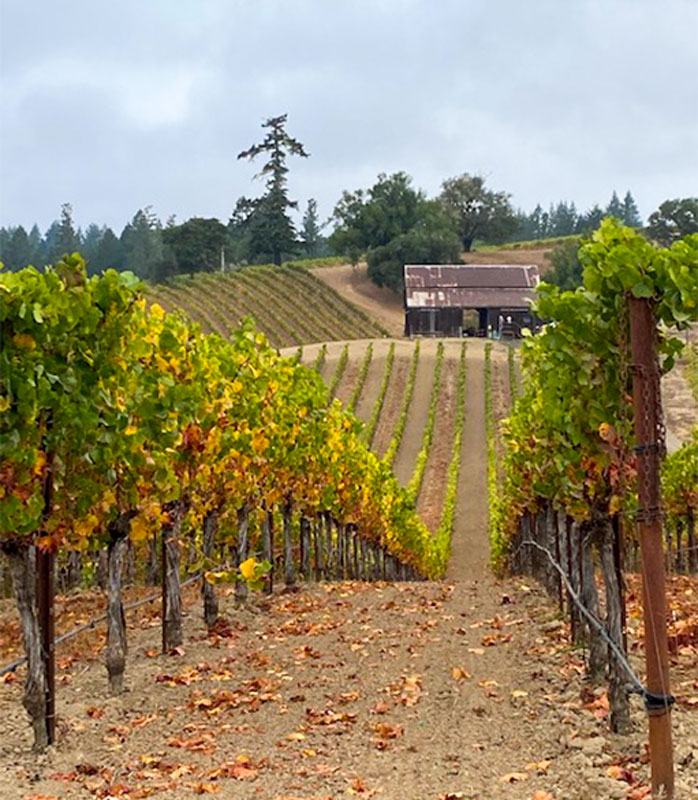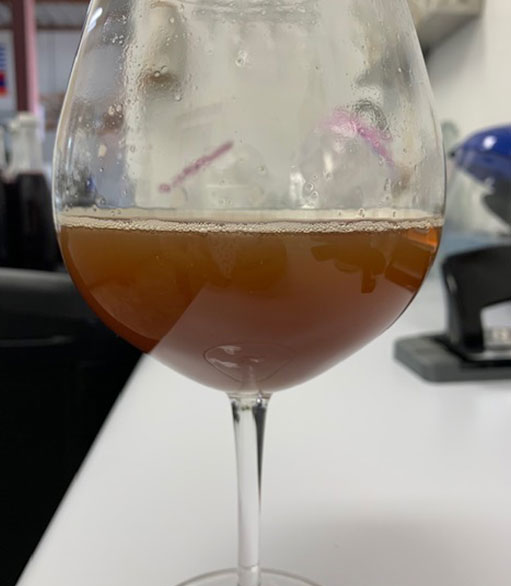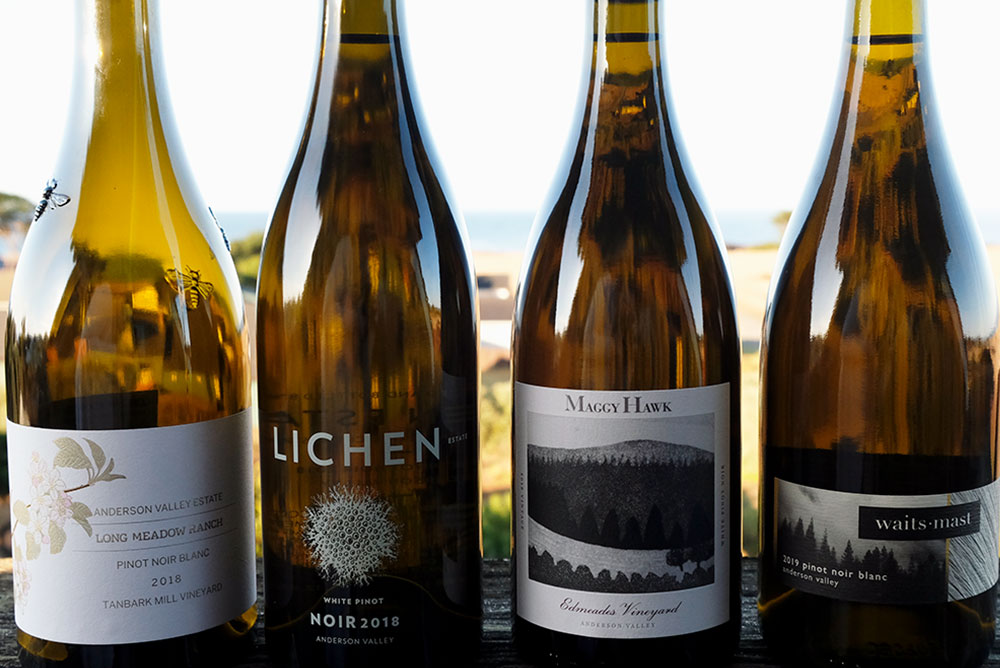One thing that fascinates me about the Pinot Noir grape is its versatility: it can be made into a beautiful red wine, or the base of sparkling wine, a crushable Rosé, or even an elegant white wine. Yes, that’s right- a white wine from a red grape! White Pinot Noir, Pinot Noir Blanc, Blanc de Noir are just some of the names for this wine that’s gaining traction in the wine industry, with many emerging from the Willamette Valley in Oregon as well as our very own Anderson Valley.
White Pinot Noir Winemaking Starts in the Vineyard
How is a White Pinot Noir made? We’ll start in the vineyard, where most great wines are made. A few important vineyard factors that a winemaker will consider when making a White Pinot Noir are:
- Harvesting the Pinot Noir grapes at a lower Brix than, say, a normal red wine Pinot Noir: more of a stylistic choice here, but many of the White Pinot Noirs out in the market are produced with lower alcohols. To achieve this, the winemaker will need to call the pick when the grapes are in the low 20’s.
- Hand-picking the grapes: this better maintains the integrity of the cluster, and prevents the berry skins from breaking and causing unintended maceration of the juice with the skins, which contains the red pigment.
- Night (or very early morning) harvesting: this guarantees that your fruit remains cold when it arrives to the winery, preventing fermentation from kicking off prematurely
In the Cellar: Where the Magic Happens for White Pinot Noir
So, you have your cool, hand-picked Pinot Noir grapes harvested at the perfect Brix- great! Now what? Typically, the whole clusters of Pinot Noir are dumped directly into the press and given a light and gentle squeeze. The winemaker is looking for the purest juice here- and the harder the press squeezes, the more (red color) you’re going to extract from the Pinot Noir grapes, which isn’t what you want.
At pressing, the juice tends to be a medium to dark brown color, which is a bit scary to see at first. This premature oxidation is a good thing- forcing the pigments to drop out now produces a light yellow or straw-colored White Pinot Noir later. More color will drop out once the yeast complete primary fermentation.
Once the juice is pressed to tank, the winemaker then has a few options of how to handle their White Pinot Noir:
- Inoculate with yeast, or let it ferment spontaneously
- Keep the juice in tank, or rack it down to oak barrels for fermentation
- Extend the time the White Pinot Noir ages in tank/barrel, or bottle it sooner
There are many directions a winemaker can go, which makes each White Pinot Noir different from the next.
Maggy Hawk White Pinot Noir
Nestled in the far north west corner of Anderson Valley (also referred to as the Deep End), Maggy Hawk vineyard is an ideal location for growing cool-climate Pinot Noir. This climate is ideal because it allows the berries to develop at a nice, even pace and helps preserve the grape’s natural acidity.
I’ve been making White Pinot Noir since 2018 for Maggy Hawk and have chosen a few blocks of 115 clone that are specifically farmed and harvested to make this special wine. I love the mix of fruity and floral aromatics that 115 gives, with plenty of bright acidity that adds length to the palate.
For my version of White Pinot Noir, I use multiple yeasts to inoculate for primary fermentation- adding to the complex mix of aromas and flavors within each lot. I also send the juice to all neutral (old) French oak barrels right after it’s pressed, where it goes through both primary and malolactic fermentation. The Maggy Hawk White Pinot Noir spends about 9 months in barrel, is sent to bottle, and then will sit another 9 months before it’s released to the world.
Is White Pinot Noir A White Wine for Food Pairing?
If you were to serve this wine blind to your friends and family, I’m sure they’d be stumped. White Pinot Noirs often have aromatics and flavors that cross over between red and white grapes, and the texture tends to be weighty, broad, and silky (compared to a Sauvignon Blanc or Chardonnay).
White Pinot Noir would match up with so many different dishes too- from a mushroom risotto to a Thai curry. Pennyroyal Farms Boont Corners Reserve Tomme would be an amazing cheese pairing, as well as a Manchego, or other semi-hard aged cheese.
Whether you’re looking to try something new this Holiday season or have a refreshing white wine after a long day of Zoom calls, go for some White Pinot Noir from these fine producers:
Anderson Valley White Pinot Noir
Willamette Valley White Pinot Noir
Amity
Left Coast Cellars
Willamette Valley Vineyards
Tendril
~ Sarah Wuethrich, Winemaker At Maggy Hawk Wines
Written in 2021, with producer updates in 2024
Sign Up for Our Newsletter
Get Updates On The Happenings In Anderson Valley!




